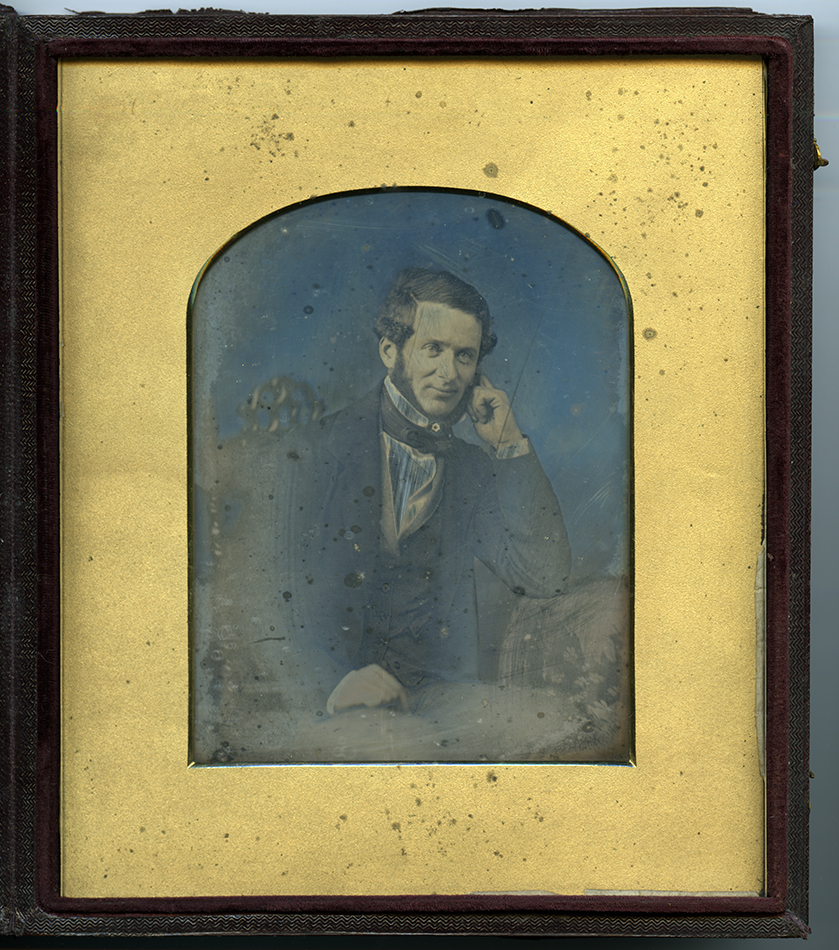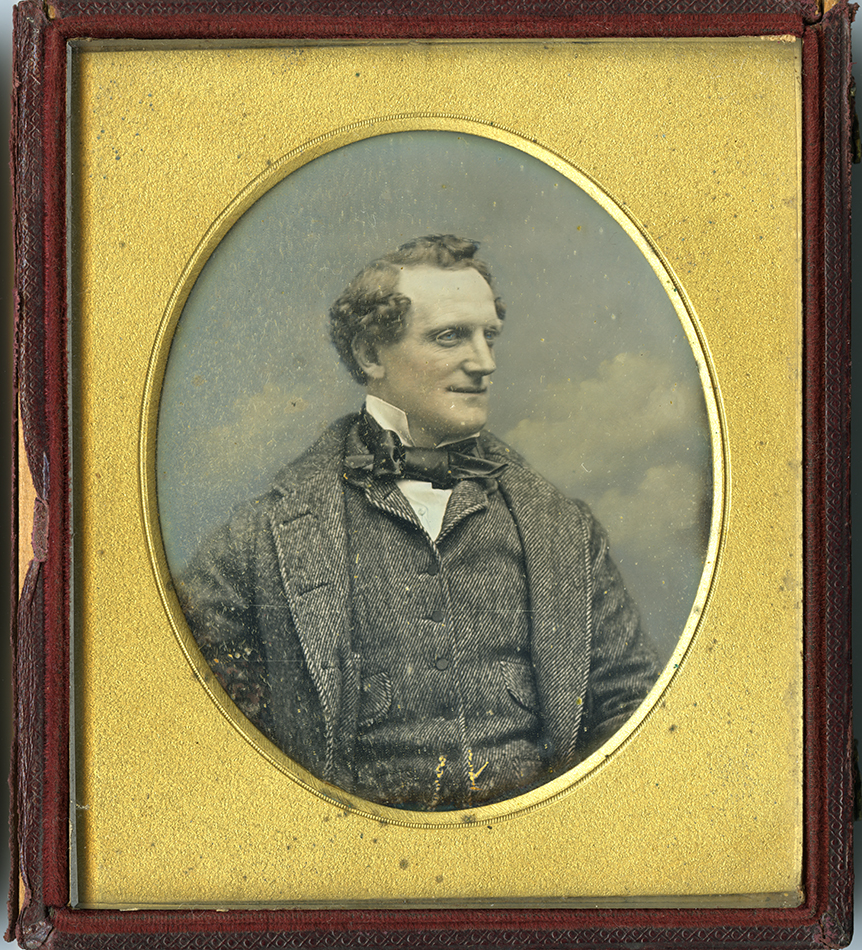Daguerreotypes in the Library’s Special Collections
To start off the new year, our Photographic Collections Manager takes a look at the daguerreotypes in the Library’s photographic collections on the anniversary of Daguerre’s announcement to the world of his new photographic process.
Before 7 January 1839 only a few avid scientists knew what photography was, or a rendition of it anyways. But on this date, a Frenchman named Louis-Jacque-Mandé Daguerre (1787-1851) presented the process (named after him) to the French Academy of Sciences. The daguerreotype process, giving a ghostly jewel-like image on a polished silver plate, was not an isolated invention, nor was it the only photographic process to be announced that year. However, it was the first time the world had heard about this concept of photography.
Generations of scientists and learned-men were working on affixing the image on a surface. Daguerre had worked with Niséphore Niépce since the 1820s evolving the heliographic process into what would become the daguerreotype.
Due to legal, political and aesthetic issues, the advancement of other photographic processes, most notably the calotype, stagnated throughout the 1840’s. In much of the world the daguerreotype reigned supreme but not without flaws. The daguerreotype would have been prohibitively expensive for most common people, who would have to have their portrait taken at a local studio or to purchase an image from a well-known or well-travelled photographer. The silver plate which one would see as the end-product, was a unique image, no others could be printed or produced from that single exposure.
Scottish daguerreotypes are quite rare, given that the calotype was so quickly adopted by prominent photographers in St Andrews and Edinburgh in the first few years after the advent of the medium. Among vast collections, we hold only 19 daguerreotype images.
Eight of these images are from the Maitland Dougall Collection. Several members of the family, including Henry King and Admiral Maitland Dougall were involved in the early photographic circles of St Andrews. In fact the entire collection of albums, loose prints and cased images is a wonderful illustration of the history of photography in the area. Although several of these daguerreotypes were produced in England, others are unattributed and were likely made in Edinburgh Studios.








An additional four daguerreotypes are also in the stereoscopic format, one of the most fervent Victorian passions. These four are found among the papers of Professor James David Forbes (1809-1868); sadly two of them illustrate the fragility of the daguerreotype process. Typically kept safe behind a glass cover, if this glass cracks or is lost the silver will begin to tarnish and drastically obscure the image. These two examples are flagged as in need of urgent conservation (keep an eye out for a follow up blog post in due course).




Three of our daguerreotypes were found in a cupboard in the Chemistry Building (many years ago) by Museum Studies students and were transferred to Special Collections for safe keeping. Given the nature of this acquisition there is very little information we have on them:


The third item from Chemistry is also very interesting in that it is a bare plate, left unsealed, ‘showing the copper plate and mounting’. This was most likely an illustrative tool for teaching the photographic process or used during demonstrations.

Over the years we have made a few select purchases of daguerreotypes which relate to other collections, for teaching purposes or acquired them as part of another purchase or auction lot.




These examples of one of the earliest photographic processes are an integral part of the Library’s collections of historic photography. The photographic archive of Scottish content is growing every year and we are always on the lookout for the elusive Scottish daguerreotypes to fill the gaps in our collections, either taken by Scottish photographers or of Scottish people.
Please don’t hesitate to get in touch if you think you can help with the great Daguerrean treasure hunt ([email protected])!
Rachel Nordstrom
Photographic Collections Manager
Please check your rules on apostrophes: Daguerreotype’s?? Sealy Gilles On Mon, Jan 7, 2019 at 6:04 AM Echoes from the Vault wrote: > St Andrews Special Collections posted: "To start off the new year, our > Photographic Collections Manager takes a look at the daguerreotypes in the > Library’s photographic collections on the anniversary of Daguerre’s > announcement to the world of his new photographic process. Before 7 January > 1" >
Hi Sealy, the error in the title has been corrected. Thanks for drawing our attention to the mistake.
[…] Nordstrom follows up here on her earlier post where she featured several of the daguerreotypes in the Library’s […]